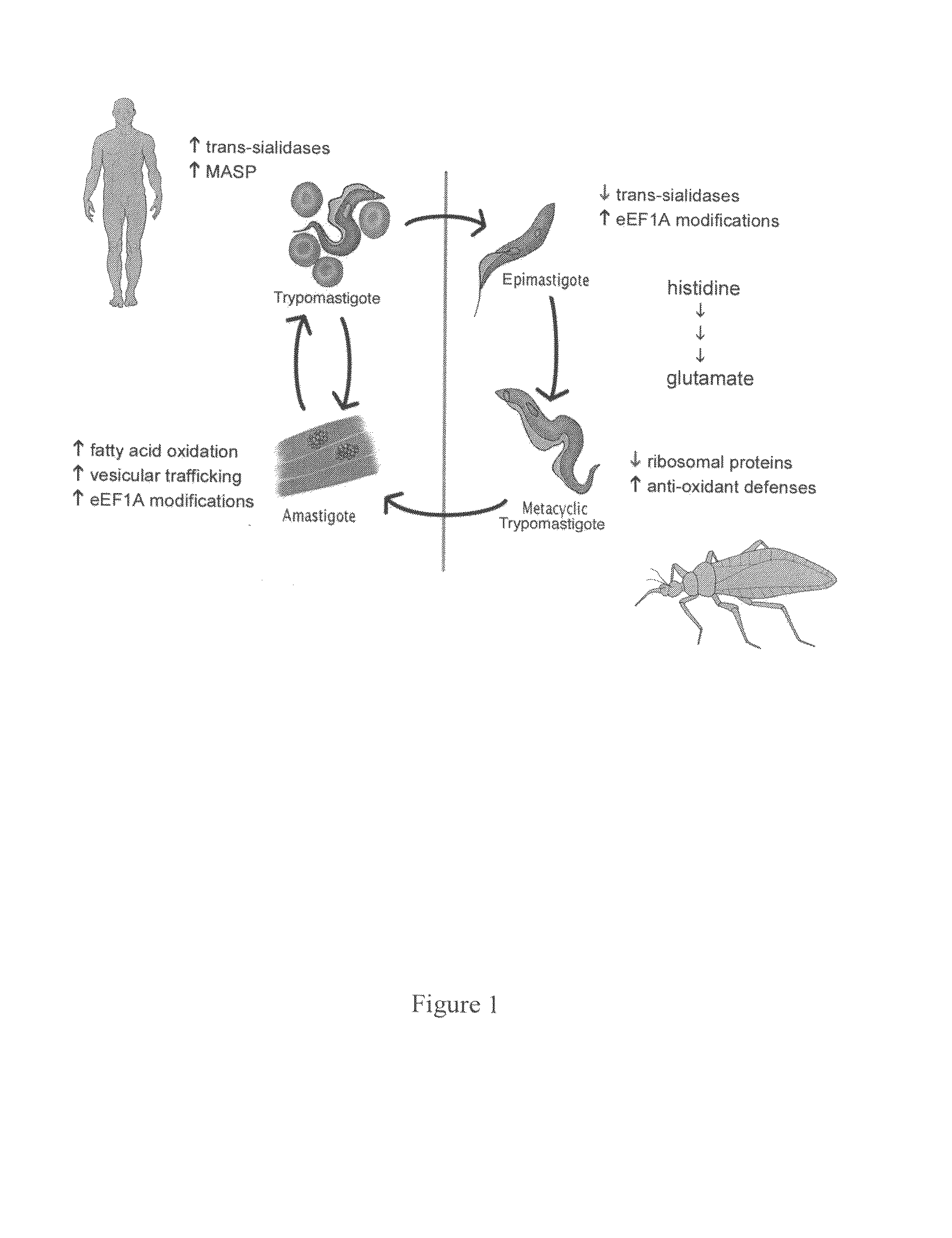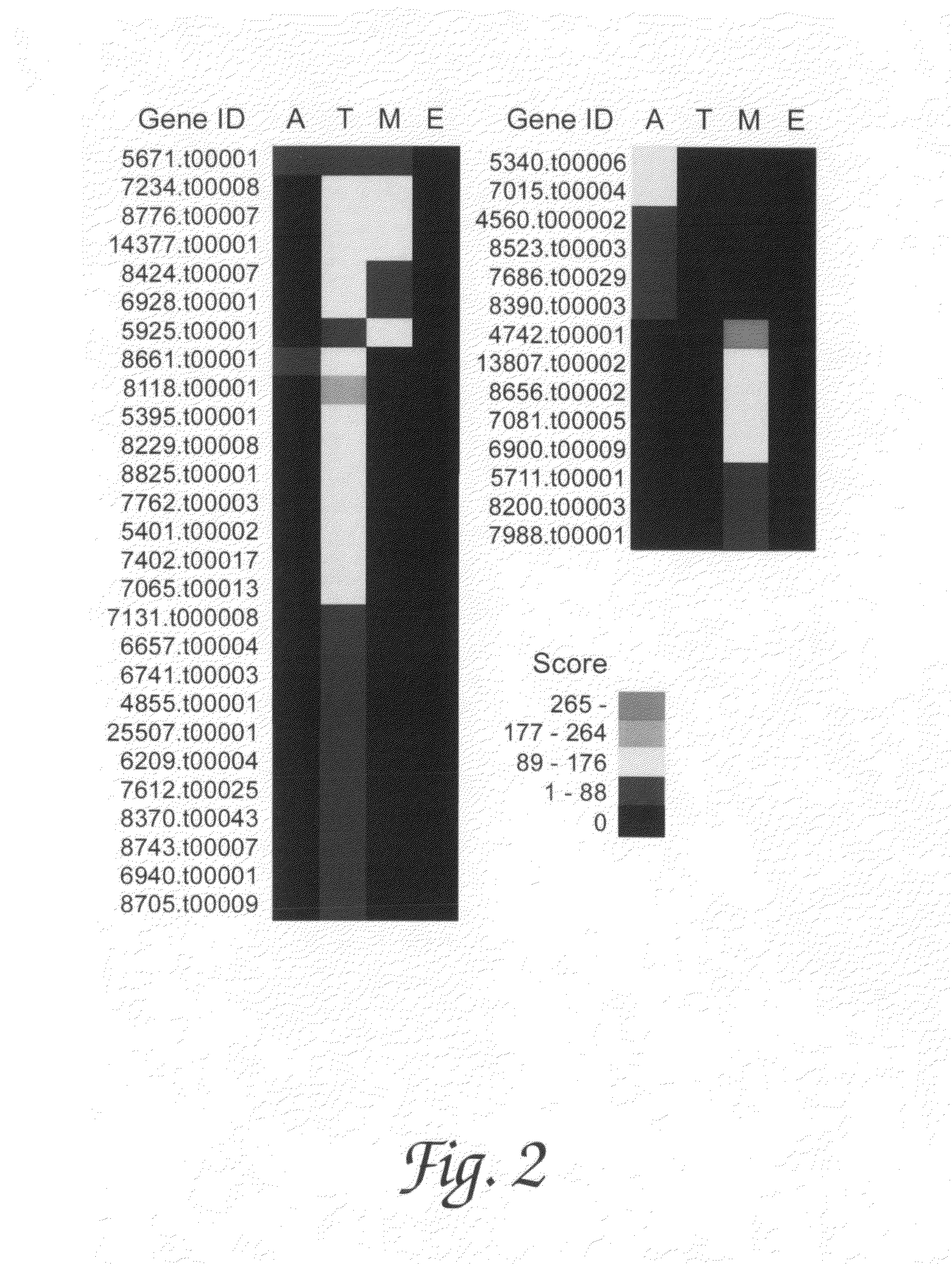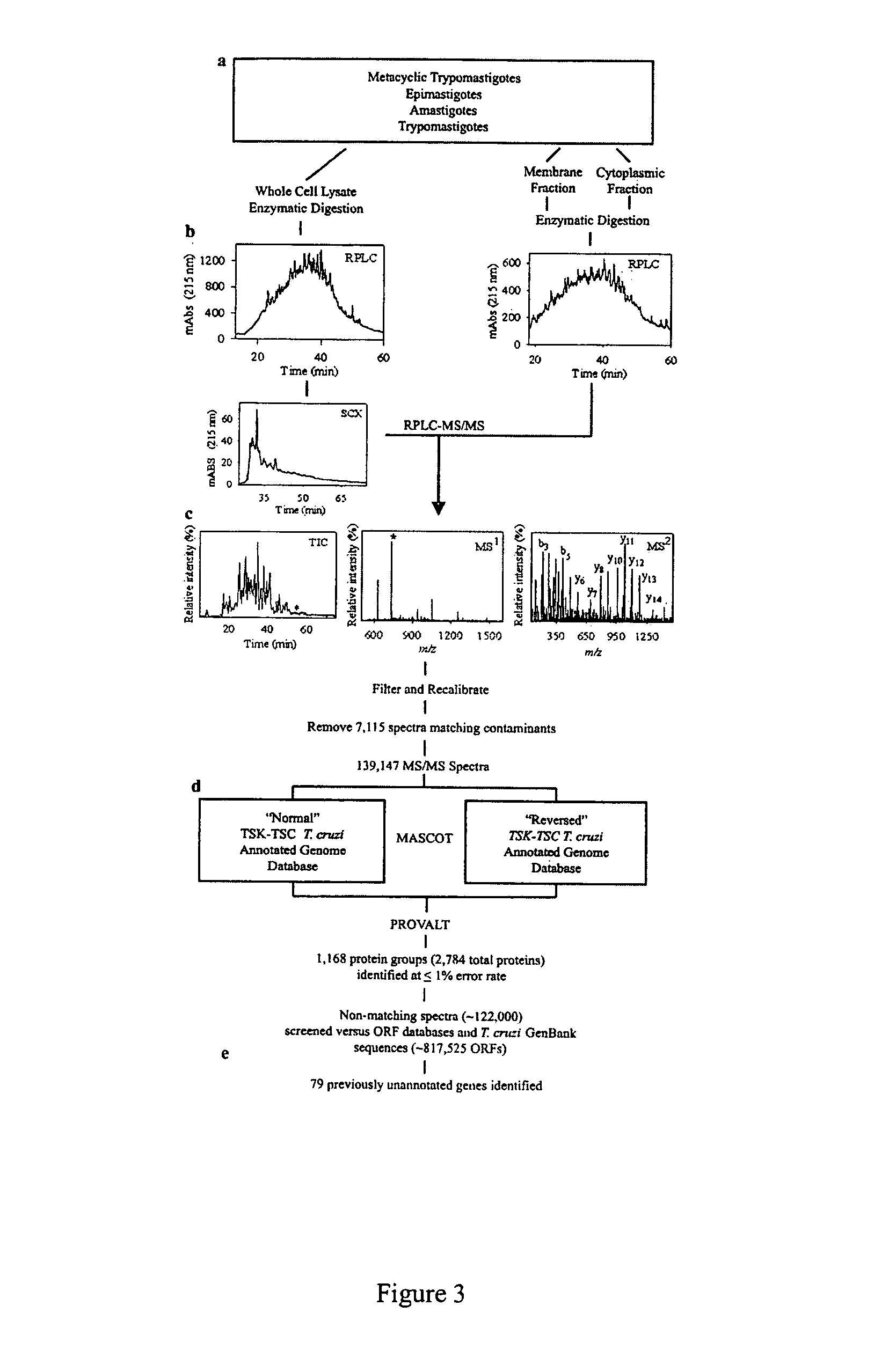Trypanosoma cruzi proteome compositions and methods
a proteome and proteome technology, applied in the field of proteome compositions and methods of trypanosoma cruzi, can solve the problems of critical lack of methods for diagnosis and treatment of i>t, and the failure of historical attempts to develop vaccines for parasitic diseases
- Summary
- Abstract
- Description
- Claims
- Application Information
AI Technical Summary
Benefits of technology
Problems solved by technology
Method used
Image
Examples
examples
[0089]The present invention is illustrated by the following examples. It is to be understood that the particular examples, materials, amounts, and procedures are to be interpreted broadly in accordance with the scope and spirit of the invention as set forth herein.
example i
The Trypanosoma cruzi Proteome
[0090]Proteomic analysis of T. cruzi, the causative agent of Chagas disease, has identified distinct energy sources for the individual parasite stage. A whole-organism, proteomic analysis of the four life-cycle stages of T. cruzi was used. Peptides mapping to 2784 proteins in 1168 protein groups from the annotated T. cruzi genome were identified across the four life-cycle stages. Protein products were identified from >1000 genes annotated as “hypothetical” in the sequenced genome, including members of a newly defined gene family annotated as mucin-associated surface proteins (MASPs). The four parasite stages appear to use distinct energy sources, including histidine for stages present in the insect vectors and fatty acids by intracellular amastigotes.
[0091]Like other trypanosomatids, T. cruzi appears to regulate protein expression primarily post-transcriptionally through variations in mRNA stability or the translational efficiency of mRNAs (Clayton, Emb...
example ii
Candidate Genes for Knockout (Live Vaccine) and / or Drug Development
[0117]Several classes of genes are illustrated as candidates for gene knockout (for subsequent use as a live vaccine) and / or as possible drug targets. The identifying numbers used herein are gene ID numbers from the T. cruzi database; available on the worldwide web at tcruzidb.org and at genedb.org.
1. Genes Involved in Fatty Acid Metabolism
[0118]Surprisingly, we found in our proteomic analysis of T. cruzi (Example I; Atwood et al. (2005) Science, 309, 473-476) that genes involved in the β-oxidation of fatty acids are up-regulated in amastigotes, suggesting that this parasite stage utilizes fatty acid oxidation as an important energy source. Interestingly, both muscle cells and adipocytes, which are the major host cells from T. cruzi in chronically infected hosts, derive most of their energy from fatty acid beta oxidation. Fatty acids are therefore expected to be readily accessible to T. cruzi living in the cytoplasm ...
PUM
| Property | Measurement | Unit |
|---|---|---|
| time intervals | aaaaa | aaaaa |
| pH | aaaaa | aaaaa |
| energy metabolism | aaaaa | aaaaa |
Abstract
Description
Claims
Application Information
 Login to View More
Login to View More - R&D
- Intellectual Property
- Life Sciences
- Materials
- Tech Scout
- Unparalleled Data Quality
- Higher Quality Content
- 60% Fewer Hallucinations
Browse by: Latest US Patents, China's latest patents, Technical Efficacy Thesaurus, Application Domain, Technology Topic, Popular Technical Reports.
© 2025 PatSnap. All rights reserved.Legal|Privacy policy|Modern Slavery Act Transparency Statement|Sitemap|About US| Contact US: help@patsnap.com



